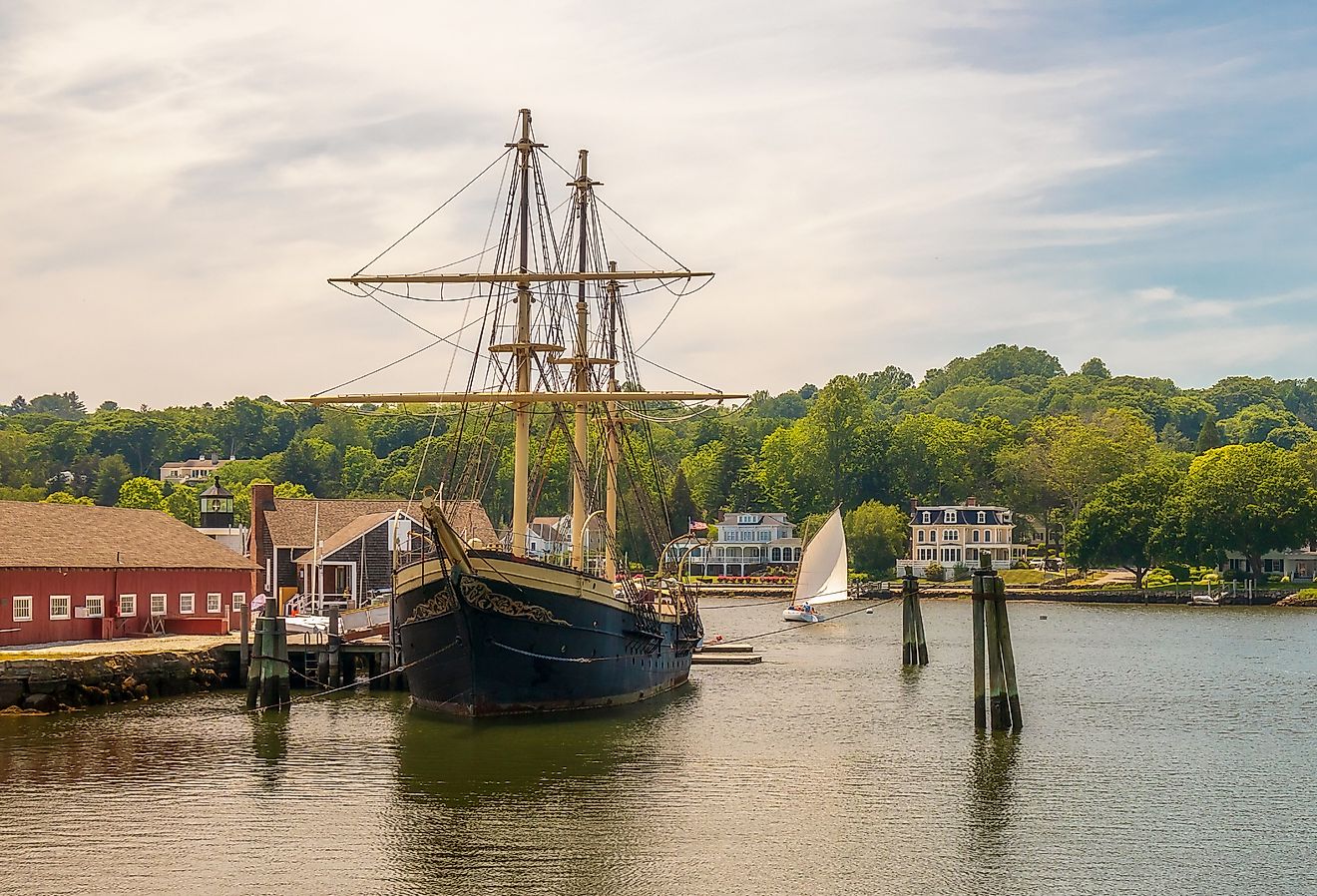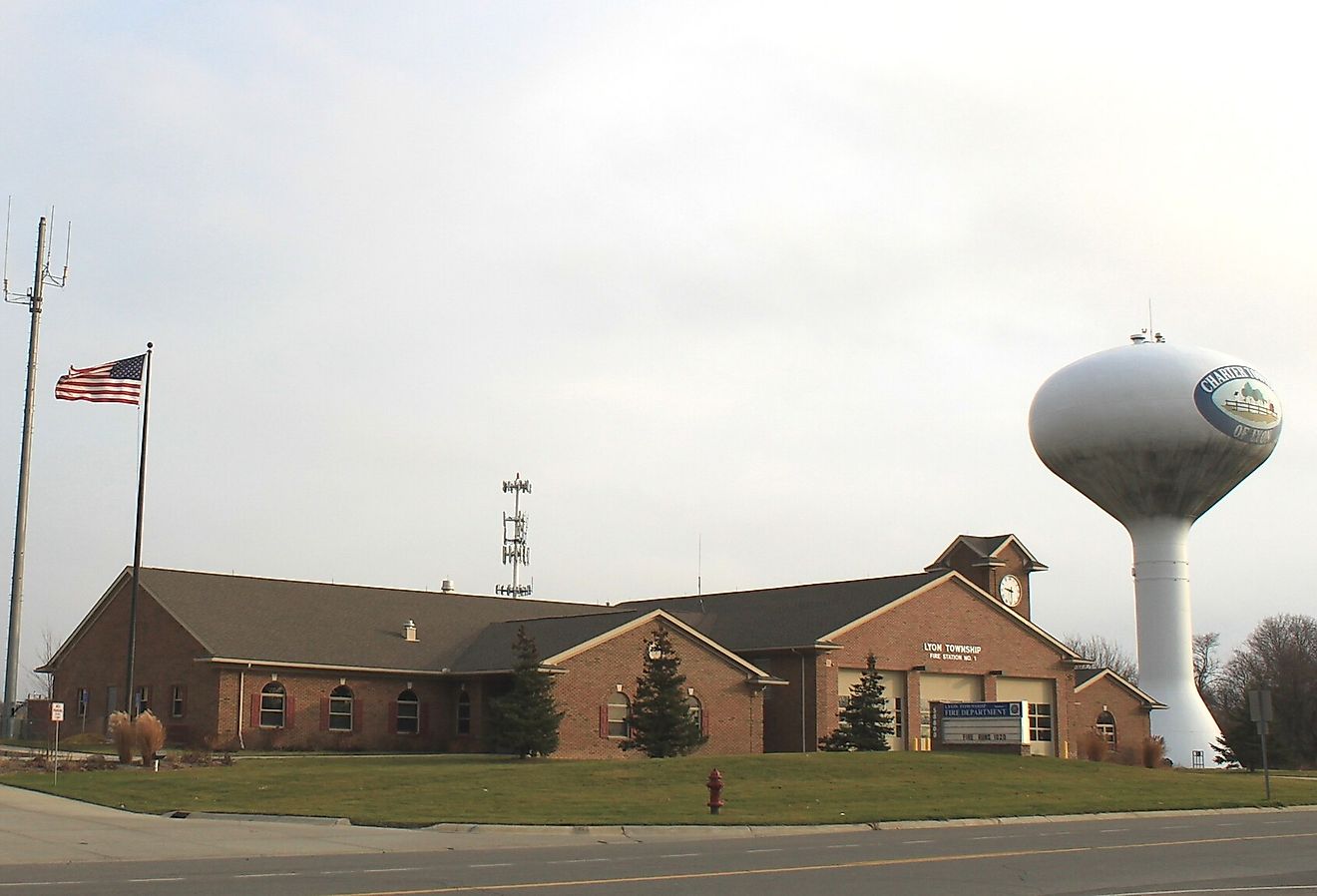
11 Most Underrated Towns In Minnesota To Take A Trip To
Minnesota is known as the "Land of Ten Thousand Lakes." The picturesque state, bordering Canada and counting the Mississippi River among its historic and natural landmarks, has long drawn visitors to major urban centers like Minneapolis, the capital, and St. Paul, which together are called the Twin Cities. Yet Minnesota's small towns are sometimes underrated, whether for weekend getaways or longer-term exploration. The state's smaller towns offer history, cultural, and abundant natural beauty outside of the bustle of major cities. For the traveler seeking something a little different, and yet just as interesting as better-known destinations, Minnesota will make a great next stop.
Mankato

Mankato, population 45,200, sits in Minnesota's south-central region, at the intersection of Highways 14 and 169, and 75 miles southwest of Minneapolis. Some of the town's early settlers including migrants from New England, who later left their tastes and traces in the local homes. Mankato may just be the birthplace of Minnesota "hotdish," also called Minnesota tater tot hotdish, a state culinary favorite that combines ground beef, a layer of tater tots, and cream of mushroom sauce, among other ingredients. The town today hosts the Greater Mankato Convention and Visitors Bureau, a logical stop for tourists looking for the town's best offerings of things to see and do. These might include the All Seasons Arena, a year-round indoor ice rink, or for history buffs, the town's History Center Museum.
Architecture fans should seek out the R.D. Hubbard House and the Betsy-Tacy House, both sites of Mankato's illustrious past residents. Public art fans will no doubt enjoy the Silo Art project, which turned an old grain storage site into a work of beauty. Nature lovers will love Mankato's four-season mix of green spaces, with city and state parks — and the standout Red Jacket Valley Park, converted from a former gravel pit — offering ample choice to the visitor.
Hanover

Hanover, with 3,800 inhabitants, is called the gateway to the Twin Cities (Minneapolis and St. Paul) for its position northwest of those two urban zones. First settled in 1877, the town's historic roots are on full display at the preserved Dutch settlement called Verenigde Oost-Indische Maatschappij, which locals shorten to VOI. Tourists can find themselves among quaint examples of Dutch old-time architecture. With its stone buildings, tree-lined streets, and green parks, Hanover is a charming town for a visit, whether for a weekend or shorter trip through town. Its position on the Crow River provides a dose of nature just outside the town center. For culture, visitors should head to Hanover in August, when the town puts on its Harvest Festival. Activities include a 5K run, parades, fireworks, and a Miss Hanover competition among the local young women.
Ely

Ely, population of 3,200, sits in northeast Minnesota in the sparsely populated Saint Louis County, on the border with Canada. Pronounced "Ee-lee," the town used to attract miners and industrialists who were then active in the Iron Range mining industries. Today, Ely is a popular base for campers, canoeists, and other nature lovers wanting to see the Boundary Waters Canoe Area Wilderness, known by its shorthand, the Boundary Waters, which counts more than one million acres of lakes and forest land.
For fun without leaving town, Ely boasts a lively downtown area, with numerous outdoor outfitters along Sheridan Street, the town's main street. Sheridan also features the Pioneer Hotel, a historic place first erected in 1887. Animal lovers should head to Ely, for its International Wolf Center, which opened in 1993, as well as the North American Bear Center, a new facility operating only since 2007. Tourists can visit both sites.
Richfield

Initially founded in 1850, Richfield, with 36,700 inhabitants, finally reach incorporation in 1908. It claims to be Minnesota's "oldest suburb," given its proximity to the immediate Twin Cities area, as part of a broader economic boom after World War II. The spirit of growth remains alive in Richfield today, given that the big-box electronics chain Best Buy, founded in Minnesota in 1966, is headquartered in Richfield. The town offers a wide array of parks and green spaces, covering a total of 460 acres. In particular, Wood Lake Nature Center, a natural preserve, protects the wetlands and more than 200 species of animal and plant life that make Minnesota a naturally unique place.
Winona

Named after a Native American princess of local legend, Winona was first settled in 1851. The Mississippi River town, with 25,800 residents, calls itself "the Midwest's best autumn playground" as a reflection of its various charms in that season of the year. A college town in the classic sense, Winona is home to Winona State University as well as St. Mary's University of Minnesota. Its cultural offerings include the Polish Cultural Institute and Museum the Minnesota Marine Art Museum. Speaking of culture: the American actress Winona Ryder, a native Minnesotan, was named after this town. For nature enthusiasts, the town Winona offers its Prairie Island Campground, an ideal camping space on the Mississippi, as well as activities like yoga, rock climbing, and canoeing. Lake Winona, in the heart of downtown, offers some natural respite from the grid-style urban core.
Owatonna

Owatonna, population 26,500, sits in Minnesota's southeast along the Straight River. Incorporated in 1865, just as the US Civil War was coming to an end, the town developed a downtown whose historic architecture remains visible, and beautiful, today. The town serves as the seat of Steele County, and the Steele County Historical Society, founded in 1949, runs the Village of Yesteryear, near the Steele County History Center. These facilities allow travelers to learn about bygone eras of Minnesota, featuring an authentic early 1900s school, railroad station, general store, and much more. For a bit of fresh air, and a little more history, head to Mineral Springs Park, where the legend of Owatonna, a Native American princess who was healed by the area's natural springs, continues to inspire visitors to better health today.
Stillwater

Sitting on the beautiful St. Croix River, Stillwater, with 19,300 residents, offers natural beauty and fascinating local history. The town lies just across the river from the state of Wisconsin and attracts tourists to its historic downtown, which is known for its Victorian architecture. The Stillwater Lift Bridge, a symbol of the town's industrial growth from 1931, should further pique the interest of visiting history buffs. In other industrial firsts, and an invention you do not need to be an engineer to appreciate, the pop-up toaster oven was invented in Stillwater in 1921. Nature seekers in Stillwater can choose among river cruises and other water activities on the St. Croix. The town's annual festivals, especially its German-themed Christkindlmarkt, mark the seasons in style.
Chanhassen

Chanhassen, population 26,200, is a bucolic town in east-central Minnesota as well as an outer southwestern suburb of Minneapolis. Music and pop-culture fans may already know the town as the home of R&B legend Prince, where he lived and operated his music studio at the Paisley Park complex from the 1980s until his death in 2016. Nature lovers will enjoy Chanhassen's lakes, which offer abundant variety for those who like walking, simming, biking, or fishing, including for the large local trophy species, northern pike. Chanhassen has five public beaches, including Lake Ann and Greenwood Shores beaches on Lake Ann, Minnewashta Regional Park on Lake Minnewashta, as well as Carver Beach — a six-acre park situated on the shore of Lotus Lake.
Alexandria

Like its Egyptian namesake, Alexandria, with 14,900 residents, is a traveler's delight. Settled in 1858, the town, halfway between Minneapolis and Fargo, North Dakota, celebrates its water-focused past at the Legacy of the Lakes Museum, which exhibits vintage boats and showcases local maritime history. The town itself is surrounded by a chain of lakes, notably Lake Winona, which occupies part of the downtown, and the much larger Lake Carlos north of town. Given its natural setting, Alexandria's outdoor options run long, from the Lake Carlos State Park to resorts, boat rentals, and the town's noted tradition of lake fishing. For culture, and a touch of mystery, head to the town's Chamber of Commerce and Runestone Museum, which displays a stone covered in Scandinavian-style rune letters called runes. The stone was reportedly found in the surrounding Douglas County in 1898.
Grand Marais

Grand Marais, with 1,400 inhabitants, beckons the visitor as a quaint harbor hamlet in the state's northeast corner, on the banks of Lake Superior. It takes its name from the French Canadians who helped settle the area prior to US statehood. Indeed, the town sits fewer than forty miles from today's border with Canada. Grand Marais, which means "Great Marsh" in French, offers an artistic and free-spirited vibe, not least for its art festival held each July. The town keeps up an outsized social calendar: it marks each year's summer and winter solstices, and every October, puts on a "Moose Fest" to celebrate the beloved local animal. Visitors at all times of the year can explore traditional crafts and artisanal production, such as blacksmithing, and bring unique handmade goods home as souvenirs.
For nature seekers, the town features five lake beaches and the Devil Track River Canyon, an 8.7-mile-long river flowing southeast into Lake Superior. These sites allow for fly fishing and, in the cold season, ice climbing for various levels of skill. Grand Marais can serve as an outdoors person's base for the Superior National Forest, the largest national forest east of the Mississippi River.
Northfield

Home to two colleges, Northfield, population 19,700, makes for a great weekend escape. Just 40 miles south of the Twin Cities, the town hosts two universities: Carlton College and St. Olaf College. The two campuses offer charming strolls among academic buildings as well as gardens, such as Carlton College's Arboretum, with easy walking trails. Northfield offers a wealth of other green spaces, and boasts nearly three dozen parks that combine for more than 400 acres of fresh-air opportunities. Amateur historians should come through town in September to watch the Defeat of Jesse James Days festival, which re-enacts the historic 1876 bank raid that took place right here. The site of the raid is now owned and maintained by the Northfield Historical Society.
Minnesota's Small Towns Capture The Spirit Of The State
For even the most selective tourist, Minnesota has a massive array of offerings and points of interest. College towns like Winona and Northfield capture the essential liberal arts campus experience, for students and tourists alike. Nature lovers will be satisfied, if not amazed, by a run through lake-bound places like Ely, Alexandria, or Grand Marais. Its Native American legends live on today, through stories and the name some of these towns bear to the world. And architecture fans will appreciate the legacies that still stand in towns as diverse as Mankato and Stillwater. Whatever a visitor's tastes, travel memories are waiting to be created in Minnesota's vibrant and historic small towns.











